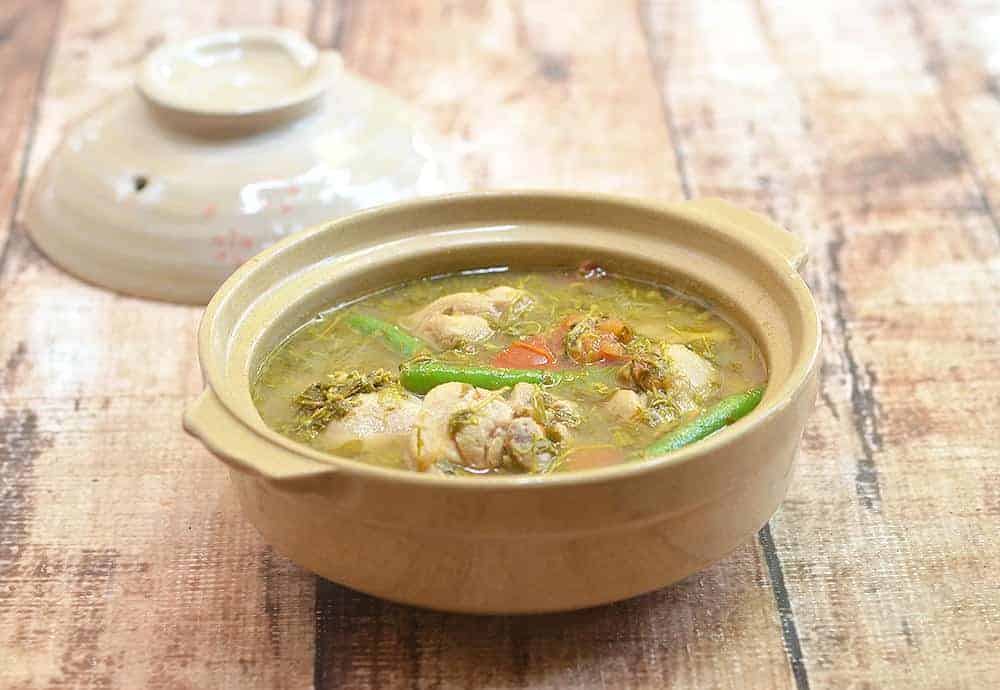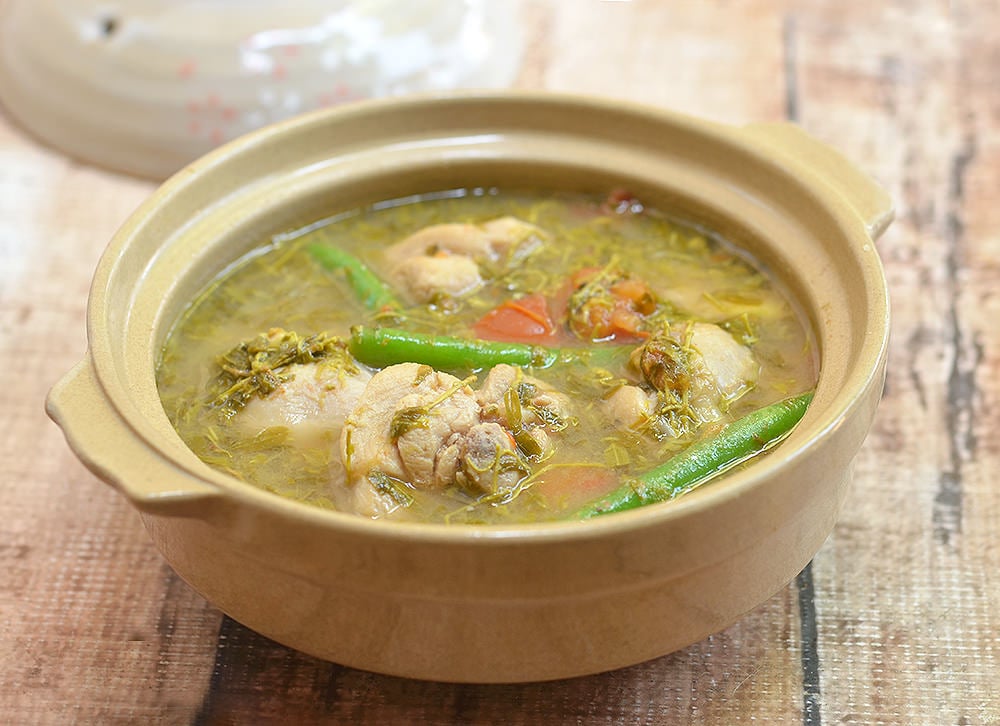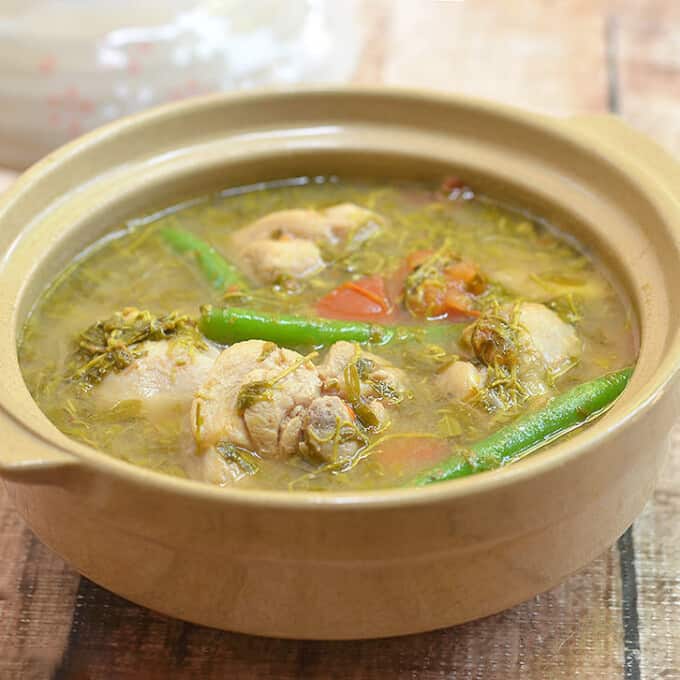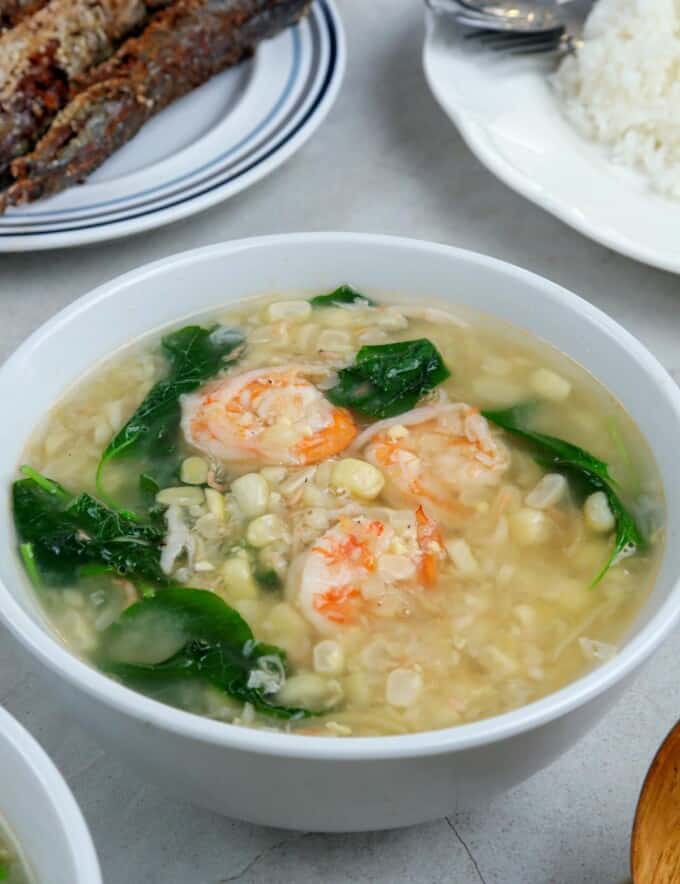Sinampalukang manok, in need of definition, is chicken cooked ala-sinigang but uses young tamarind leaves along with the tamarind pulp to sour the broth.

Although the vegetable component of true sinampalukan is mostly the tamarind leaves only, feel free to make it more substantial and add eggplant, kangkong or the other types of vegetable common in sinigang. Serve with piping hot rice and enjoy!

Ingredients
- 1 tablespoon oil
- 1 onion, peeled and sliced
- 2 cloves garlic, peeled and minced
- 1 thumb-size ginger, peeled and julienned
- 2 large Roma tomatoes, chopped
- 1 (about 3 to 4 pounds) whole chicken, cut into serving parts
- 1 tablespoon fish sauce
- 4 cups water
- 8 to 10 pieces fresh tamarind or 2 tablespoons tamarind base powder
- 1 cup long beans
- 1 cup pickled young tamarind leaves or 2 cups fresh young tamarind leaves
Instructions
- In a pot over medium heat, heat oil. Add onions, garlic, and ginger. Cook, stirring regularly, until aromatic.
- Add tomatoes and cook, mashing with until softened.
- Add chicken and cook, turning occasionally, until color changes and juices run clear.
- Add fish sauce and continue to cook, stirring occasionally, for about 1 to 2 minutes.
- Add water and bring to a boil.
- Lower heat, cover, and simmer until chicken is cooked through.
- Add long beans and pickled tamarind leaves or fresh tamarind leaves, and cook until long beans are tender yet crisp.
- Add tamarind base powder or tamarind pulp, stirring to combine. Continue to cook for about 2 to 3 minutes.
- Season with salt to taste. Serve hot.
If Using Fresh Tamarind
- Wash tamarind and place in a pot with enough water to cover. Bring to a boil and cook until soft and outer skins begin to burst.
- With a fork, mash tamarinds. In a fine mesh strainer set over a bowl, pour tamarind and liquid. Continue to mash with a fork, returning some of the liquid into the strainer once or twice, to fully extract juice. Discard seeds and skins. Add tamarind juice in place of tamarind base powder.
If Using Fresh Tamarind Leaves
- Strip tamarind leaves from stems and discard stems. Using a mortar and pestle, pound the leaves to release some of its juices. Add to pot in place of pickled young tamarind leaves.
“This website provides approximate nutrition information for convenience and as a courtesy only. Nutrition data is gathered primarily from the USDA Food Composition Database, whenever available, or otherwise other online calculators.”





Airene V. Galit says
I’ll try to cook sinampalukang manok. Thank you for sharing the recipe.
Ana Marie Merano Raymundo says
I love sinampalukang manok
Maria says
Hi Ms. Lalaine,
Can I use tamarind sauce instead? Thank you.
Have a nice day!
Len says
Do you drain the pickled sumpalok leaves? Thank you.
Bettina says
Do you drain the water from pickled leaves or include it?
Lalaine Manalo says
I drain it 🙂
Kevin says
I want to make this soup to impress a Filipino lady I'm interested in. When does the water get added? While adding the fish sauce? Thanks.
Lalaine says
Hello Kevin,
I corrected the recipe. Yes, you add the water after the fish sauce. I hope she enjoys it 🙂
Kevin says
Thanks, it came out great. She loved it. While I was cooking for her I also made salabat, biko and Brazo Dr Mercedes.
She's all smiles. Thanks for the great soup recipe.
Lalaine says
Lucky girl 🙂
Leah Falguera says
I'll try this tonight!!! Perfect for the rainy season! Thanks Miss Lalaine!
Zerina says
Lalaine
Looks fabulous , I am gonna try this one out in a while , Love it
Lalaine says
Thank you, Zerina. Let me know how it turns out 🙂
Camille says
I love your blog! This is my go-to place whenever I need help with my weekly menu
ArisG says
Was looking for a recipe for this. Thank you.
Lalaine says
You're welcome. Happy cooking!